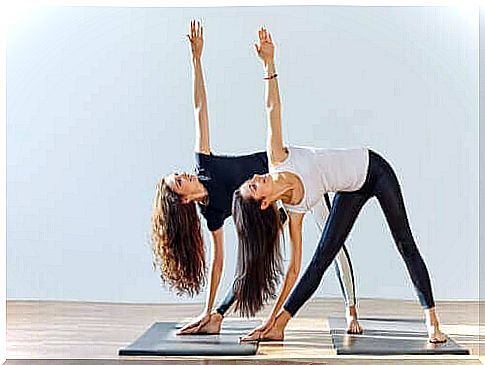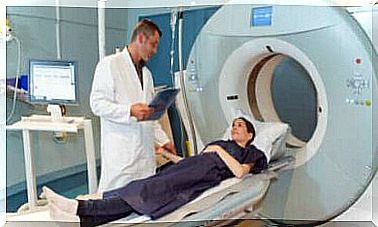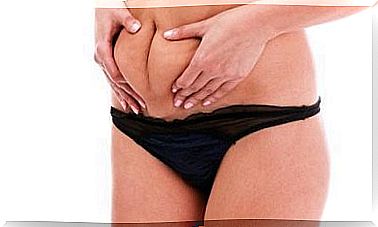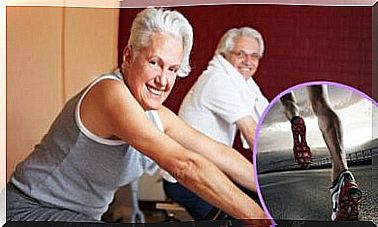Does Yoga Help With Osteoarthritis?

The proven benefits of yoga are many and varied – ranging from maintaining a proper posture to helping us deal with daily stress and numerous illnesses. With that in mind, yoga against osteoarthritis can be very beneficial.
In this article we will look at the symptoms of this disease as well as some simple exercises you can do at home. Yoga is an ancient form of exercise that originated in India and it is considered more of a lifestyle than a sport or physical activity.
What is osteoarthritis?
Osteoarthritis is a chronic disease that most often occurs in people over the age of 60, but it can occur in people of any age and primarily adults.
This disease affects the musculoskeletal system and in particular the health of the joints. The most common symptoms of osteoarthritis are:
- Pain when making movements.
- Tenderness in the area.
- Swelling and stiffness.
- Loss of flexibility.
- Synovitis.
- Deformity.
- Inflammation.
- Osteophytes.
There are several risk factors that experts associate with osteoarthritis, such as age, gender (women are more likely), obesity, injury, stress or overexertion (in sports and work activities) as well as genetic factors and some metabolic diseases. This applies, for example, to hemochromatosis.
Osteoarthritis is a disease that develops slowly and progressively and affects the quality of life of those who suffer from it. Until now, there is no cure for it.
There are various treatments that help against osteoarthritis. They primarily target the symptoms and consist of the following:
- Surgical intervention (replacement surgery ).
- Medications (painkillers and non-steroidal anti-inflammatory drugs, cortisone injections).
- Physiotherapy and rehabilitation.
In addition, there are some habits that help against osteoarthritis, which contribute to the treatment of it and the management of symptoms as well as preventing the progression of the disease.
Can yoga help with osteoarthritis?
Practicing yoga is among the activities that can help improve the symptoms of osteoarthritis. In this regard, the benefits of yoga are related to several factors such as:
- Strength and grip.
- Flexibility.
- Balance.
- Stress management.
- Feeling of well-being.
- Quality of life.
Therefore, many people recommend yoga as a complementary therapy to conventional treatments for osteoarthritis. However, is there any scientific support for this? Let’s look at what science has to say about it.
Research on yoga in the treatment of osteoarthritis
A review article from 2019 according to the effectiveness of yoga in the treatment of osteoarthritis analyzes studies of this topic. These covered over 640 patients between the ages of 50 and 80, primarily women, with osteoarthritis of the lower extremities.
The results did not reveal much evidence for the positive effects of yoga in the treatment of pain due to osteoarthritis compared to other exercises. Nor was there strong evidence for its effects on quality of life. Nevertheless, researchers consider the use of yoga for osteoarthritis of the knee to be advisable.
In this connection, another review article made a meta-analysis of the integrative effects of practicing yoga in patients with osteoarthritis of the knee. The review article focused on aspects such as pain reduction, functional healing and the overall well-being of patients suffering from this disease in the aforementioned joint.
A total of 13 clinical trials were reviewed. These involved 1557 patients with osteoarthritis of the knee and rheumatoid arthritis. The results indicate that group yoga is useful in reducing arthritic symptoms, promoting physical function and increasing overall well-being.
According to clinical trials specifically, the effects of integrated approach with yoga therapy (IAYT) were studied in a study involving 66 patients aged 30-75 years who also suffered from osteoarthritis of the knee.
The results of the experimental group receiving the IAYT intervention showed that there were significant improvements in grip strength in the left hand and extension of the knee compared to the control group.
In conclusion, a study examining the effects of Hatha Yoga on osteoarthritis of the knee found that after eight weeks of training this type of yoga, pain and other symptoms had decreased. Furthermore, they had an improved performance in their daily activities and a better quality of life.
Yoga to help with osteoarthritis
There are several types of yoga. However, the Association for Osteoarthritis has some recommendations as they consider some types of yoga to be more appropriate for patients with osteoarthritis. These include iyengar, anusara, kripalu and viniyoga.
On its own , there are also certain yoga programs, exercises and postures that one can perform to relieve symptoms of osteoarthritis. Among them are the following:
The mountain position to help against osteoarthritis
The mountain position is a very simple exercise. You need to start with your big toes together and a bit of distance between your heels. As you breathe deeply, open your chest and place your hands – palm to palm – at the same height as your heart. Next, lift them over your head and look up at the ceiling.
The war position
The war position is a yoga exercise that works the abdominal muscles, legs and buttocks. It consists of the following: Stand with your feet apart so that there is about 1 meter between the heel of the front foot and the big toe of the back foot.
Next, rotate your leg (to the right side if it is the right leg, and vice versa) and bend your knee so that your leg forms an angle of 90 °. Next, lift your hands upward as much as possible with your palms together. Take a deep breath and change legs.
The shoemaker’s position to help with osteoarthritis
Do this exercise while sitting on the floor with your legs outstretched in front of you. Next, bend your knees, bring your soles together, and try to bring your heels up toward your pelvis.
Let your knees fall down to the sides without forcing them down, that is, without trying to open them any more. Maintain this position for one minute. Next, stretch your legs and bring your feet back to their original position.
The pipe position
Start in a position reminiscent of the previous one. Sit on the floor with your legs together and outstretched without bending your knees. If you need it or feel more comfortable that way, you can use a mat to sit on.
Your back should stay firm and straight. Your hands should be out to the sides with the palms facing forward. Similarly, your feet should be straight and the soles should also point forward. Stay in this position for a minute.
Does yoga help against osteoarthritis?
If you suffer from osteoarthritis, yoga is a complementary therapy that you may consider an alternative. However, yoga can not replace the treatment your doctor recommends.
It is best to seek out a professional instructor who has experience working with people with similar symptoms. You should also ask your doctor what exercises you can perform.
On the other hand , keep in mind that yoga includes three aspects that we need to consider in order to achieve the greatest benefits:
- Vigilance and breathing techniques.
- Strength, flexibility and balance movements.
- Relaxation and meditation.
Likewise, as with any other form of exercise, the practice of yoga should begin slowly and remain calm until you feel your body warm. Therefore, it is important to make sure you warm up first.
Lastly, it is crucial that you listen to your body and pay attention to its signals. If you feel pain or discomfort, it means you should stop. The idea is to reduce pain and improve your quality of life – not the other way around.









